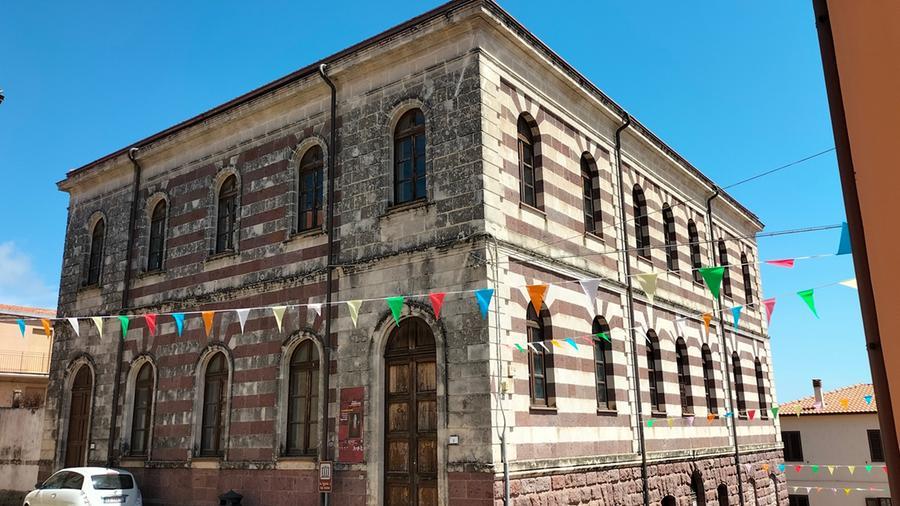Villanova Monteleone, a mountain village that overlooks the sea
Mayor Ligios: «We are the gateway of the hinterland ready to offer our treasures»
Sure, you can't hear the sound of the waves crashing on the cliffs or the jingle of rigging on boat masts, but Villanova Monteleone - 567 meters above sea level - has the sea. And not that of the politicians of yesteryear, promised at election rallies to charm the gullible, but the real sea, with beaches and coves, and with no less than 14 kilometers of coastline nestled between Alghero and Bosa, from Poglina (or the Hope) to Sa Murena. More within reach of villanovese since the early 2000s, thanks to the opening of the scenic road that starting from SS 292 connects to Sp 105, the Alghero-Bosa coastal road.
A mountain town, then - its highest peak, “Pedra Ettori”, reaches 718 meters - with a large part of the territory overlooking the sea. So it is no coincidence that the municipal administration led by Vincenzo Ligios intends to invest heavily on that map. «There are all the conditions – says the mayor – to take full advantage of the opportunities offered by the thousands of tourists who travel along the Alghero-Bosa road, making our 'sea road' the gateway to Villanova and the interior of Sardinia». To bring tourists to discover the riches of Villanova Monteleone, which of the mountain village has all the peculiarities. Two thousand and 82 inhabitants, the seat of the Union of Villanova Municipalities-which also includes Mara, Monteleone Roccadoria, Padria and Romana-with a medieval urban layout, the town has an ancient part made up of limestone and lava stone houses, a dense network of alleys, widenings, paved stairways. Those streets are often overlooked by “palatu” type buildings. One of them, “Su Palatu 'e sas Iscolas”, the old schoolhouse built in the late 19th century, has been used as a cultural center and particularly a hub for photography in Sardinia.
Nearby, “sa Domo Manna”, “the big house”, now houses the ethnographic museum. Both buildings testify to a cultural vivacity that Villanova historically expresses with exhibitions, conferences, and art reviews. Also valuable is the town hall, built around 1700, owned by the prestigious family of the Counts of Minerva. Of great importance is the 1500s parish church of St. Leonard of Limoges, renovated in 1789. Not far from the parish church is the oratory of Santa Croce, and also in the town center, the church of Madonna del Rosario.
Along the road to Bosa, about 3 kilometers from the town, stands the shrine of Our Lady of Interrìos. In the territory, another body of water of great importance: the lake on the river Temo, which Villanova shares with its ancient progenitor, Monteleone Roccadoria (the pre-existing village of Villanova grew from 1436, when the people of Monteleone took refuge there following the long siege by the Aragonese, Sassaresi and Bosani, taking the name Bidda Noa Monteleone, or Villa Nuova di Monteleone).
The site, “Sa Tanca 'e sa Mura”, includes a suggestive nuraghe, a Punic village and the remains of two medieval churches, which remain submerged by the waters of the lake and can be visited only when their level is very low. Near the lake rises Mount Minerva (644 m. asl), an imposing bastion with a flat, horizontal summit from high, precipitous trachyte walls.
At the foot of the mountain are several structures: the palace of the Count of Minerva, known as “Palatu”, which was once frequented by the royal family of Savoy during the summer. Also present are the old dairy, stables and barns, buildings now used for various activities. Also in the countryside, the necropolis of Pottu Codinu, the Nuraghe Appiu, the church of Curos, and the tomb of giants of Laccaneddu.
Nor should we forget, of Villanova Monteleone, the prestigious tradition of horse breeding, the ancient art of weaving and the precious traditional costume, the tasty dishes made with delicious meats from animals raised in the wild, the cheeses and typical sweets. Not to be forgotten is the great improvisational poet Remundu Piras.

